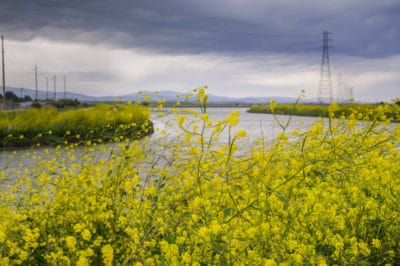Invasive Weed
Brassica kaber, or wild mustard, is native to temperate regions around the Mediterranean and Asia. It is unclear how it escaped that range but what is clear is that wild mustard has naturalized in just about every temperate climate across the globe.
In the Americas, wild mustard has reduced cereal and canola yields for a century or more leading to massive efforts toward eradicating it. A fast growth rate, 3500 seeds per plant, and the ability to remain dormant in the soil for decades makes it a tough plant to be rid of.
Cattle who eat the seed can experience digestive problems, so farmers work hard to clear it from their pasture land. However, some suggest that if eaten by animals before the flowering stage it is nutritious.
The best ways to reduce wild mustard populations:
- Late Planting
- Crop Rotation
- Tillage
- Flame
Identification
Brassica kaber is between 1 and 3 feet tall with occasional branches. It is a broadleaf herbaceous plant with alternate 6 inch long leaves that vary in shape. White hairs cover the stem of the plant and point toward the soil.
The most noticeable feature of the wild mustard is its large yellow flowers. It is easy to identify members of the mustard family through their blooms, though the flowers of wild mustard are even larger. Each flower has four petals that form the shape of a cross or ‘x’. There are 6 stamens at the center of the flower which form a small ‘H’ and a green pistol emerging from the middle.
Distinguish the wild mustard from other mustards by patches of red and purple near the base of its stems. Sometimes they can appear as rings.
Cultivation and Uses
For being classified as noxious and invasive, wild mustard has a surprising number of uses. Not only did this plant give rise to all of the cultivated and ‘tame’ mustards that gardeners grow, it really isn’t much different from them. The young leaves are like a spinach eaten cooked or raw.
The flowers add spice to various foods. When dried and they retain their yellow color making them a saffron alternative. The seeds can be crushed to make the condiment mustard. Relish and pickle recipes often use mustard seed either whole or crushed.
Medicinally the ground seeds are made into a paste that is laid upon aching muscles or joints to reduce inflammation. It is taken as a tea to reduce headaches and steamed to clear sinus congestion.
